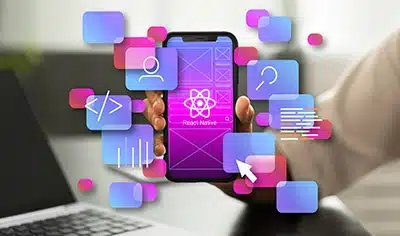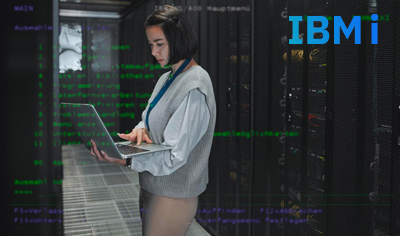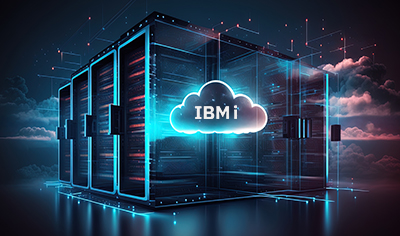With changing business dynamics, decision-makers are actively considering modernizing monolithic systems to grow, adapt, and stay competitive. In fact, 26% of decision-makers plan to modernize their custom business applications in a year to less than 2 years, while 20% of them plan application modernization in 2+ years. From this, it is clear that in an increasingly digital world, it has become critical for decision-makers to consider legacy systems modernization to drive their digital transformation initiatives. However, the real challenge that lies in the path of legacy systems modernization is understanding the risk-to-reward ratio before one actually starts acting.

Gartner states that for many global enterprises, ‘legacy systems are often perceived as impeding their processes and business initiatives that rely on them’. Decision-makers need to consider application modernization when a tipping point is reached to overcome the obstacles associated with legacy systems. In other words, it is likely that legacy systems might have fueled the growth of a business in the past few years, however, they may have now reached a maturity point, and posing a slew of challenges including slow and inefficient performance, inadequate security, poor maintenance support, incompatibility to meet growing business demands, lack to support to integrate modern functionalities, and more. The good news is that organizations can address all these challenges by optimizing the monolithic architecture of legacy systems and aligning them to meet ever-changing business needs to stay competitive. Let’s dive deep into application modernization.
A Winning Guide to Application Modernization
Embark on the Digital Transformation Journey With App Modernization
Enterprise norms are changing, and so are business solutions. Today, businesses require future-ready solutions that increase productivity, improve agility, bring scalability, enhance efficiency, strengthen security, and enrich the customer experience. One way to ensure this is by embracing application modernization. A recent study by Infosys reveals that the global legacy application landscape is estimated to be modernized by over 50% in the next two years and 70-90% of modernization in the next five years.
With legacy systems modernization, organizations can update older applications for mobility, analytics, cloud, and newer computing approaches such as modern programming languages, infrastructure platforms, libraries, and frameworks. Besides this, it allows enterprises to unlock the intelligence and data’s potential held in the legacy systems to drive digital transformation initiatives and embark on new paths to success. What’s more interesting to note is that legacy systems modernization helped businesses increase their annual revenue by 14% and improved productivity by nearly 40%.
Key Benefits Businesses Can Harness With Application Modernization
Many forward-thinking companies across industries are adopting modernization to convert their legacy systems into an asset. Let’s take a sneak peek at some key benefits modernization brings along.

1. Cut Down on Soaring Technical Debt
Legacy systems pose several challenges to businesses including a lack of scalability, high application maintenance costs, bugs, and more. When business tends to overlook legacy application modernization, technical debt starts soaring. In addition, legacy applications are hosted on-premise, and maintaining a data center on-premise in itself is expensive, time-consuming, and challenging. The good news is that businesses can cut down on their operational costs by 13% with legacy systems modernization. Modernizing legacy applications allow organizations to leverage the potential of the Cloud platform to meet ever-changing requirements. Also, it eliminates the need for maintaining a dedicated data center on-premise since the private cloud offers a pay-as-you-go model wherein enterprises need to pay only for the services they use resulting in significant cost savings.
The Growing Threat of Technical Debt
2. Better Interoperability
Modernization improves the application interoperability with modern tools, frameworks, platforms, code, and emerging technologies such as AI, Machine Learning, Big Data, Cloud, etc. In other words, application modernization enables businesses to outpace laggards by introducing new features that not only align perfectly with their current needs but also meet future demands. For instance, enterprises can use personalization as a key differentiator in customer service by introducing AI and ML with their legacy applications, which in turn, enables them to automate routine tasks and handle customer queries more effectively.
3. Unbreachable Security
Data security is one of the key reasons behind legacy systems modernization. In fact, a report indicates that 87% of decision-makers admitted that retaining legacy systems leave businesses open to potential data breaches and security threats. The reason behind this is the lack of modern security practices and incompatibility with authentication methods. With application modernization, businesses can ward off security vulnerabilities associated with legacy systems since it offers state-of-the-art security upgrades, DDoS protection, and Application Delivery Controllers (ADCs) that safeguard critical business data from advanced malware attacks, security threats, and data breaches.
4. Cloud Native Development
With legacy systems modernization, organizations can not only upgrade their older applications by adding modern functionalities and features but also rearchitect the legacy asset into cloud-native solutions. This bestows organizations the ability to leverage the benefits offered by the public cloud such as increased data security, better scalability, improved agility, and faster go-to-market.
Building a Business Case for Software Portfolio Modernization
Concluding Thoughts
Modernization is the need of the hour for businesses using legacy systems since these age-old applications fail to meet modern requirements. With application modernization organizations can accelerate their digital transformation journey without modifying existing operations, rewriting codes from scratch, or purchasing new hardware.
The important thing to note is that there are different approaches available for modernizing legacy applications, and each approach has its own set of pros and cons. Therefore, organizations need to consider the right course that aligns with their strategic goals and objectives. Furthermore, a foolproof method for achieving zero disruption application modernization is partnering with a reliable company having strong prowess in re-architecting legacy IT assets and migrating their codebase to a modern, new platform.
Case in Focus
A leading real estate client with a strong presence in major towns and cities in the UK was struggling to manage the peak load. Damco helped the client manage the peak load by migrating workloads and applications from heterogeneous platforms to Azure Cloud using the forklift (rehosting) approach. As a result, the client was able to reduce costs by 29% and improve system efficiency by 43%. Read the detailed case study available on our website.





